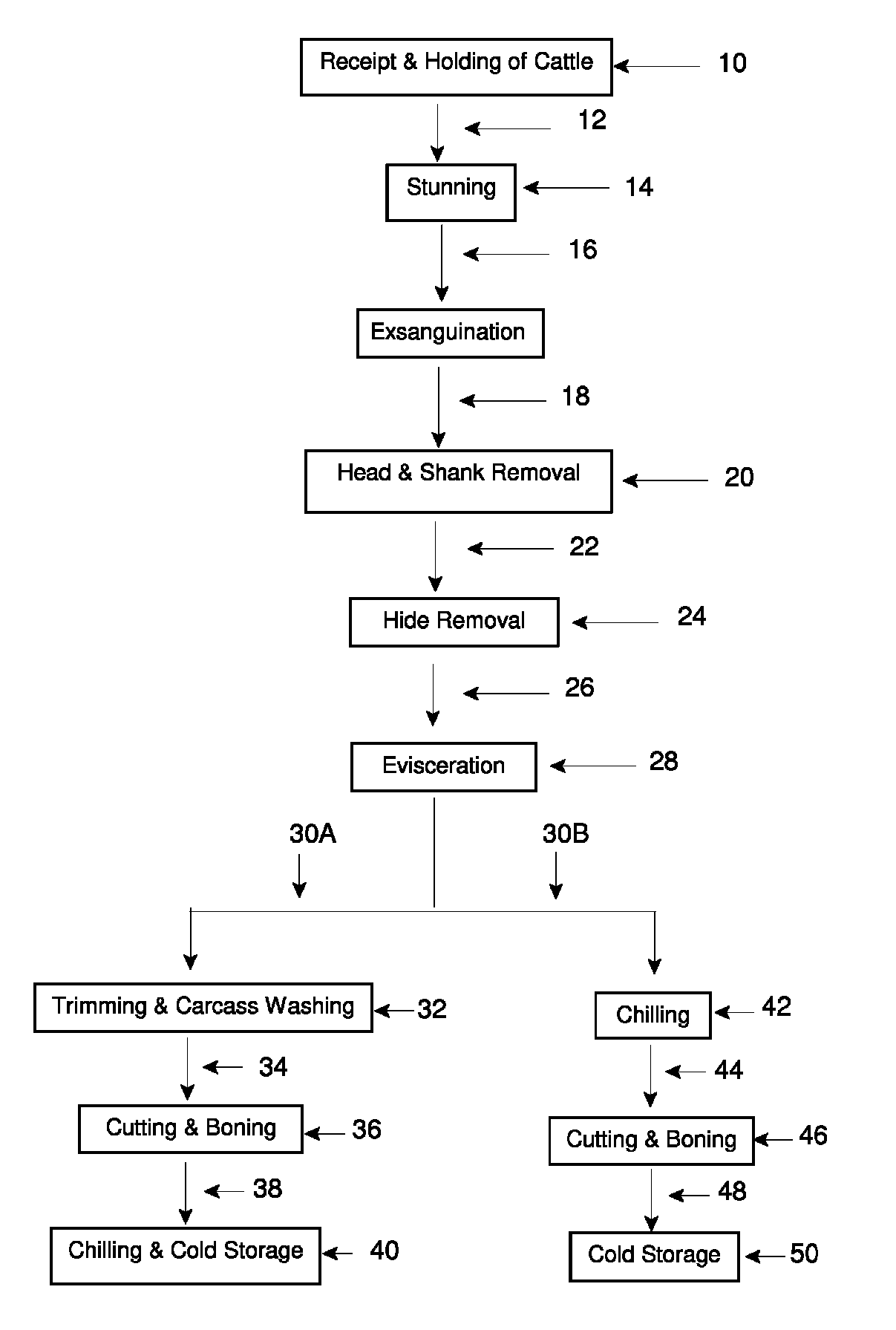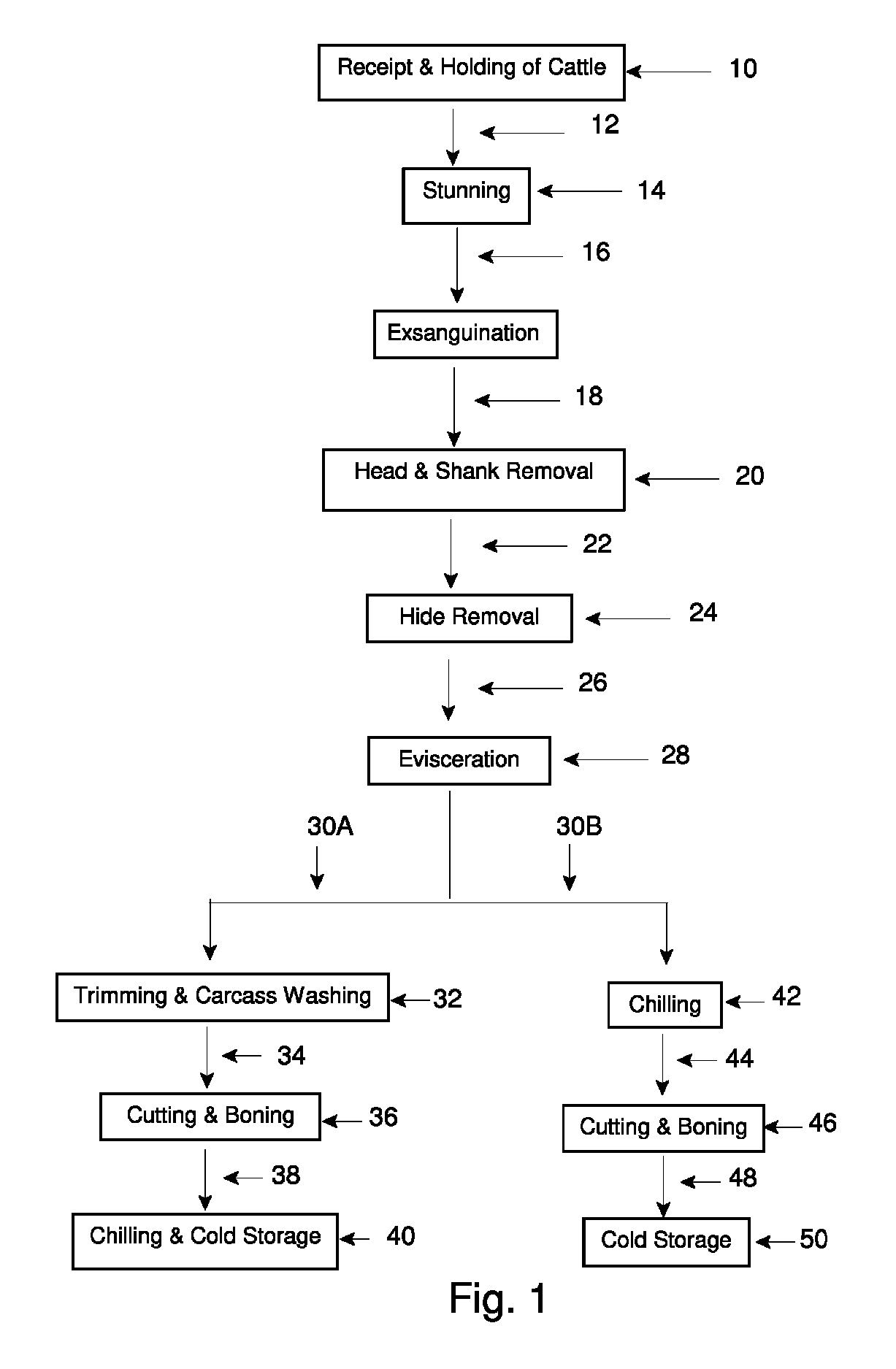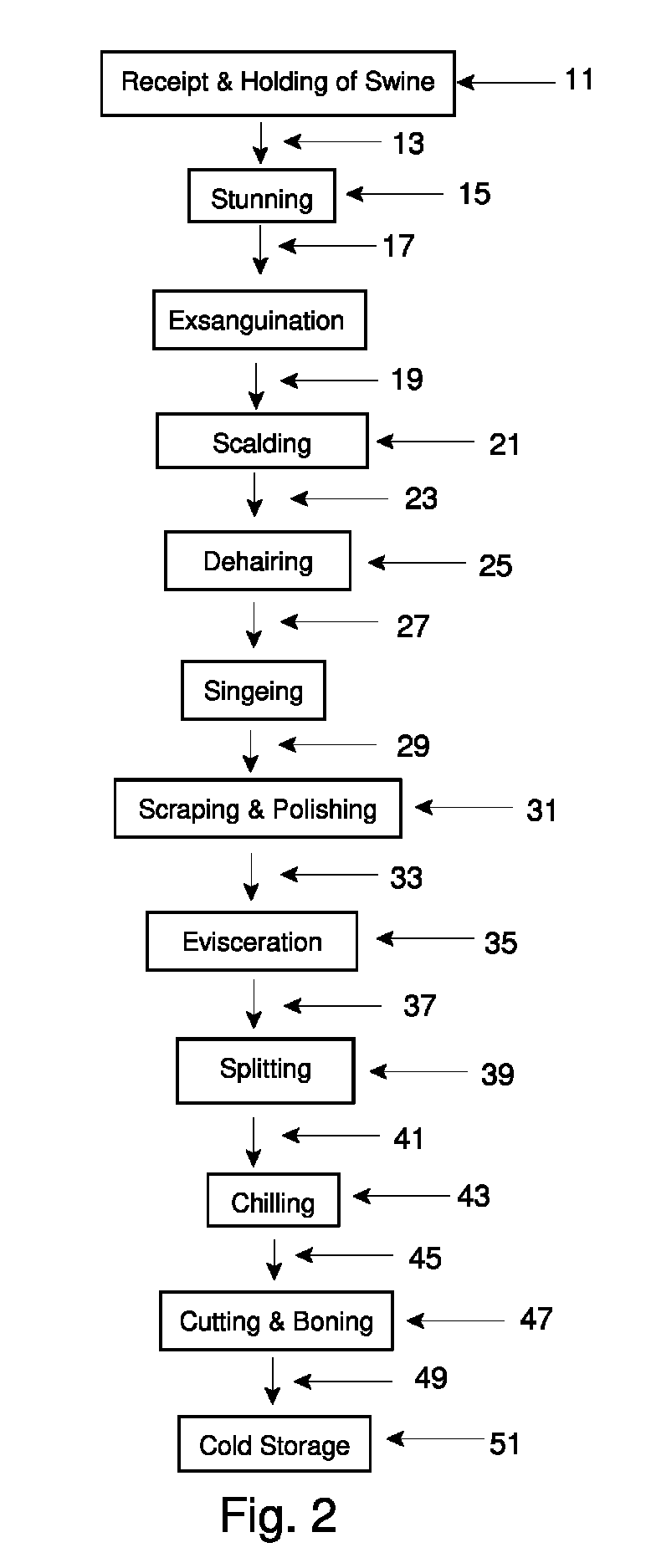Microbiocidal control in the processing of meat-producing four-legged animals
a technology of four-legged animals and microorganisms, which is applied in the field of microorganism control in the processing of meat-producing four-legged animals, can solve the problems of unsatisfactory total elimination of bacteria from fresh raw meat, bacterial contamination of meat and meat products, and undesirable etc., and achieves the effect of reducing the time available for a microorganism to exert its microorganism activity, reducing the amount of the quality of the quality of the quality of the quality of the quality of the quality of the quality of the quality of the quality of the a four-legged animal processing of meat-producing four-legged animal processing and processing of meat-producing four-legged animal processing and microbiocidal control of the processing of four-legged animal processing microbiocidal control of the processing of four-legged animal processing and control of the field of four-legged animal processing and control of the field of four-legged animal processing and control of the time available for the time, bacterial contamination of fresh meat undesirable tim
- Summary
- Abstract
- Description
- Claims
- Application Information
AI Technical Summary
Benefits of technology
Problems solved by technology
Method used
Image
Examples
example
[0081]The effects of various biocides on contact with boneless beef top round London broil were studied experimentally. In a 80×40 crystallization dish, approximately 25 g of this meat cut was placed. Approximately 30 g of the biocide solution was applied for 5 minutes. This volume of solution partially immersed the meat in the solution. After 5 minutes the meat portion was removed from the biocide solution, rinsed with deionized water and patted dry. The control was another piece of the same meat cut placed in deionized water for 5 minutes under the same conditions given above. The biocidal materials tested were:[0082]a) Commercial Lasso household bleach solution;[0083]b) Commercial chlorine bleach solution containing ca. 100 ppm as Cl2;[0084]c) 2% Lactic acid;[0085]d) DBDMH, approximately 100 ppm expressed as bromine;[0086]e) BCDMH, approximately 100 ppm expressed as bromine;[0087]f) Stabrom 909 biocide (Albemarle Corporation), approximately 100 ppm expressed as bromine.
The result...
PUM
 Login to View More
Login to View More Abstract
Description
Claims
Application Information
 Login to View More
Login to View More - R&D
- Intellectual Property
- Life Sciences
- Materials
- Tech Scout
- Unparalleled Data Quality
- Higher Quality Content
- 60% Fewer Hallucinations
Browse by: Latest US Patents, China's latest patents, Technical Efficacy Thesaurus, Application Domain, Technology Topic, Popular Technical Reports.
© 2025 PatSnap. All rights reserved.Legal|Privacy policy|Modern Slavery Act Transparency Statement|Sitemap|About US| Contact US: help@patsnap.com



